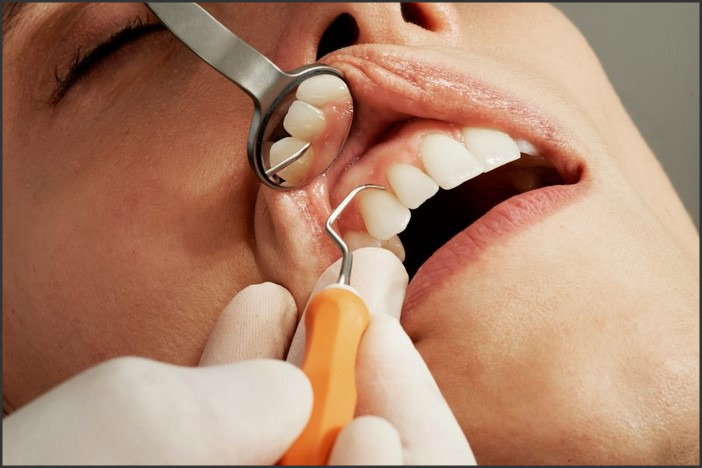
Good dental hygiene is essential for maintaining healthy teeth and gums. Plaque is a sticky film of bacteria that forms on the teeth and can cause cavities and gum disease if not removed. Removing plaque from teeth is an important part of maintaining good oral health. There are several effective dental hygiene practices that can help to remove plaque from teeth and prevent it from forming in the future. These include brushing and flossing regularly, using an antiseptic mouthwash, and visiting the dentist for regular check-ups and cleanings. By following these practices, you can help to keep your teeth and gums healthy and free of plaque.
How to Remove Plaque from Teeth: A Comprehensive Guide to Effective Dental Hygiene Practices
Good dental hygiene is essential for maintaining healthy teeth and gums. Plaque is a sticky film of bacteria that accumulates on the teeth and can cause cavities, gum disease, and other oral health problems. Fortunately, there are several effective ways to remove plaque from teeth and keep your smile looking its best.
The first step in removing plaque from teeth is to brush twice a day with a soft-bristled toothbrush and fluoride toothpaste. Brushing helps to remove plaque and food particles from the surface of the teeth. It is important to brush for at least two minutes each time, making sure to reach all areas of the mouth.
Flossing is another important part of plaque removal. Flossing helps to remove plaque and food particles from between the teeth and along the gum line. It is important to floss at least once a day, using a gentle sawing motion.
In addition to brushing and flossing, using an antiseptic mouthwash can help to reduce plaque buildup. Mouthwash can help to kill bacteria and reduce the amount of plaque on the teeth. It is important to use an antiseptic mouthwash that contains fluoride to help protect against cavities.
Finally, regular visits to the dentist are essential for maintaining good oral health. During a dental checkup, the dentist can remove any plaque that has built up on the teeth and provide advice on how to improve your dental hygiene routine.
By following these simple steps, you can effectively remove plaque from your teeth and keep your smile looking its best. With regular brushing, flossing, and visits to the dentist, you can maintain a healthy mouth and a beautiful smile.
The Benefits of Regularly Removing Plaque from Teeth: Why You Should Make It Part of Your Dental Hygiene Routine
Regularly removing plaque from your teeth is an important part of maintaining good oral health. Plaque is a sticky film of bacteria that accumulates on the surface of your teeth and gums. If left unchecked, plaque can lead to a variety of dental problems, including cavities, gum disease, and bad breath. Fortunately, removing plaque is easy and can be done at home with the right tools and techniques.
The most important benefit of regularly removing plaque from your teeth is that it helps to prevent cavities. Plaque contains bacteria that produce acids that can erode the enamel of your teeth, leading to cavities. By removing plaque, you can reduce the amount of bacteria in your mouth and help to protect your teeth from decay.
In addition to preventing cavities, regularly removing plaque can also help to prevent gum disease. Plaque can accumulate along the gum line, leading to inflammation and infection. If left untreated, gum disease can cause tooth loss and other serious health problems. By removing plaque, you can help to keep your gums healthy and reduce your risk of gum disease.
Finally, regularly removing plaque can help to improve your breath. Plaque can cause bad breath by trapping food particles and bacteria in your mouth. By removing plaque, you can reduce the amount of bacteria in your mouth and help to keep your breath fresh.
Making plaque removal part of your dental hygiene routine is easy and can help to keep your teeth and gums healthy. To remove plaque, you should brush your teeth twice a day with a soft-bristled toothbrush and fluoride toothpaste. You should also floss daily to remove plaque from between your teeth. Finally, you should visit your dentist for regular checkups and professional cleanings.
In conclusion, regularly removing plaque from your teeth is an important part of maintaining good oral health. By removing plaque, you can help to prevent cavities, gum disease, and bad breath. Making plaque removal part of your dental hygiene routine is easy and can help to keep your teeth and gums healthy.In conclusion, removing plaque from teeth is an important part of maintaining good oral health. Practicing effective dental hygiene habits such as brushing and flossing regularly, using mouthwash, and visiting the dentist for regular check-ups can help to keep plaque at bay and ensure that your teeth stay healthy and strong.